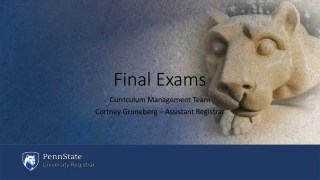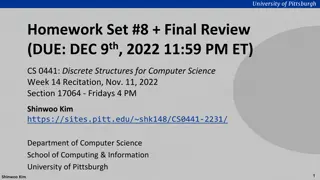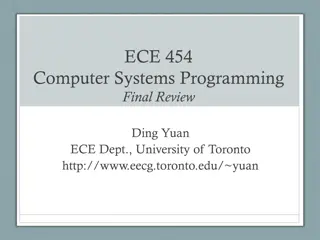
Astrophysical Neutrino Emission Insights
Delve into the theoretical modeling and observation of astrophysical neutrinos, exploring topics such as pp collision-induced neutrino emission, cosmic rays from astrophysical objects, acceleration mechanisms in astrophysical shocks, and the challenging yet exciting task of detecting neutrinos with projects like IceCube, KM3Net, and Baikal-GVD.
Download Presentation

Please find below an Image/Link to download the presentation.
The content on the website is provided AS IS for your information and personal use only. It may not be sold, licensed, or shared on other websites without obtaining consent from the author. If you encounter any issues during the download, it is possible that the publisher has removed the file from their server.
You are allowed to download the files provided on this website for personal or commercial use, subject to the condition that they are used lawfully. All files are the property of their respective owners.
The content on the website is provided AS IS for your information and personal use only. It may not be sold, licensed, or shared on other websites without obtaining consent from the author.
E N D
Presentation Transcript
Theoretical Modeling of pp Collision-Induced Neutrino Emission from Astrophysical Sources Ji-Hoon Ha (Korea AeroSpace Administration)
Cosmic Rays (CRs) from Astrophysical Objects (1) Galactic Cosmic ray From supernova remnants (2) Extragalactic Cosmic ray From clusters of galaxies, starburst galaxies, active galactic nuclei, gamma-ray bursts Neutrino emissions from astrophysical objects (??) 1/22
Astrophysical Shock and pp collision-induced Neutrino astrophysical shock ? Diffusive Shock Acceleration thermal protons ? CRs ?0 ? ? ??( ??) ? ??(??) plasma waves ??(??) 2/22
Acceleration Mechanism in Astrophysical Shocks Generation of plasma waves and particle acceleration plasma kinetic simulation (e.g., Ha et al. 2018, 2021, 2022) Particle acceleration modeling based on Diffusive Shock Acceleration (DSA) Fokker-Planck equation (e.g., Ryu et al. 2019, Ha 2024, 2025) 3/22
Observation of Astrophysical Neutrinos: (1) IceCube Detecting astrophysical neutrinos in the energy range of TeV PeV (e.g., Aartsen et al. 2014a) The source discovery potential of IceCube-Gen2 (Credit : IceCube Collaboration) Neutrino flux as a function of energy blazar TXS 0506+056 (The IceCube Collaboration 2018) Detecting astrophysical neutrinos is challenging, but could it be possible? 4/22
Observation of Astrophysical Neutrinos: (2) KM3Net Detecting astrophysical neutrinos in the energy range of TeV PeV (e.g., The KM3Net Collaboration 2025) Locations of KM3Net sensitivity Detecting astrophysical neutrinos is challenging, but could it be possible? 5/22
Observation of Astrophysical Neutrinos: (3) Baikal-GVD Detecting astrophysical neutrinos in the energy range of TeV PeV (e.g., Aynutdinov et al. 2023) Structure of Baikal-GVD Location of Baikal-GVD blazar TXS 0506+056 (e.g., Baikal-GVD collaboration 2023, ICRC) Detecting astrophysical neutrinos is challenging, but could it be possible? 6/22
Observation via Korean Neutrino Observatory (KNO) Measured and expected fluxes of natural and reactor neutrinos 2ndHyper-K Detector in Korea (KNO) KNO (10 MeV ~1 TeV ??) Can astrophysical objects be identified as point-like neutrino sources via KNO? 7/22
Neutrino emission related to non-relativistic shocks is the main focus of this talk. Clusters of galaxies Starburst galaxies (SBGs) Supernova remnants (SNRs) 8/22
Clusters of Galaxies: CR Acceleration in Intracluster Shocks Ha, Ryu and Kang 2020 Cosmological hydrodynamic simulations [L = 57 Mpc/h box (1650 cells)] (1) CR acceleration efficiency (Ryu, Kang and Ha 2019) pre-existing CR (2) re-acceleration (Kang and Ryu 2011) 9/22
CR Production by Intracluster Shock CR Spectrum: Diffusive Shock Acceleration (DSA) Integrated CR Spectrum in a Cluster of Galaxies CR Density in a Cluster of Galaxies Normalization Condition 10/22
Predicted Neutrino Fluxes from Nearby Galaxy Clusters Ha, Ryu and Kang 2020 (1) ??: neutrino source function (2) The energy spectrum of neutrinos (3) The neutrino flux ~ ?? ? The probability of detecting nearby galaxy clusters as an isolated neutrino source with KNO (or IceCube) is very small. ~ ?? ? 11/22
Starburst galaxies (SBGs) Ha, Ryu and Kang 2021 high star formation rate (SFR ~ ? ??? + high supernova rate (~ ?.?? ? ?? ?): powerful CR factories! ??????) *Starburst nucleus (SBN) Schematic diagram of SBG CR production (1) pre-SN stellar winds (SWs) (2) supernova remnants (SNRs) from core- collapse supernova CR transport (1) SBN wind (2) diffusion mediated by turbulence 12/22
CR production model in SBN Total CR injection rate in SBN: CR produced by a collection of shocks induced by supernova remnants (1) single PL model (2) double PL model: CR produced by a collection of shocks induced by stellar winds 13/22
CR transport model in SBN (1) SBN wind: advection of CRs, a phenomenon that typically acts in the same way for CRs of any energy. (2) Diffusion mediated by turbulence: ?? timescales of CR transport Model A (Sudoh et al. 2018, Peretti et al. 2019): - CR diffusion through resonant scattering off the large-scale turbulence in SBN. longer diffusion time! CRs are efficiently confined in SBN! shorter diffusion time! Model B (Krumholz et al. 2020): - CRs interact with self-excited plasma waves via CR streaming instability. CRs easily escape from SBN! 14/22
Predicted Neutrino Fluxes from Nearby SBGs Ha, Ryu and Kang 2021 Except in the most optimistic scenario, the neutrino fluxes from nearby SBGs are too low to be detected as point sources. 15/22
To Understand the Scientific Potential of Neutrino Observatories to Detect Neutrinos from Supernova Remnants Source neutrino fluxes in the energy range of GeV - PeV Searching galactic gamma-ray sources Number of events?? Observation time?? etc ?? All of these issues require detailed investigation. 16/22
Scenario of Gamma-ray Production: Leptonic vs Hadronic Inverse-Compton Scattering (leptonic) Example: Vela Jr Pion decay (hadronic) e.g., H.E.S.S. Collaboration 2018 (1) Fully hadronic emissions (?) (2) Hadronic + leptonic emissions (?) 17/22 (Figure: H. Costantini 2017)
Can galactic neutrino sources be detected as point sources of neutrinos? Ratio of the sensitivity and the expected flux (Aiello et al. 2019) Number of expected events in 5 yr (kappes et al. 2006) 90: minimum detectable flux (sensitivity) 0: expected flux inferred from gamma- ray flux by H.E.S.S. KM3NET: TeV PeV galactic sources are possibly detected within ~ 5 years with KM3NET 18/22
Predicted Neutrino Fluxes from Galactic Sources Derived from Measured Gamma-ray Fluxes Estimated neutrino fluxes inferred from fully hydronic scenario Ha et al. in prep. 1 3 * ? = ?,?,? * ?? 2?? ??2????,?? ~?? (???)?,?? 2?? ?? 4 ? * ??: the relative charged-to-neutral pion rate ? search cone (diameter of galactic sources <~ ? ) KNO: ~ GeV TeV IceCube, KM3NET, Baikal-GVD: ~ TeV - PeV Neutrinos from galactic sources may be detected via KNO (??) 19/22
Searching for Galactic Gamma-ray Sources Listed in the Fermi-LAT Catalog: Detectability from GeV to 10 TeV Ha et al. in prep. * 18 SNRs (? search cone) Signal to noise ratio: total neutrino flux: SNR can be a potential candidate (TeV 10 TeV) ??(??= 10 ???) ?????(??= 10 ???)< ~ a few ??(??= 1 ???) ?????(??= 1 ???)< 1 ??(??= 100 ???) ?????(??= 100 ???)< ~ 10 1 3 2 1 20/22
Dependence on the Fraction of Hadronic Gamma-rays The IceCube-Gen2 Collaboration 2020 Estimated neutrino fluxes Ha et al. in prep. ??,??? ????= ? ???? ??????,? ??? ??,??? * ??????,? : Effective area of IceCube * ??0: Fraction of hadronically originated gamma-rays Dependence on the effective area (minimum ???for detection) Stacked Expected Events (8 SNRs) 21/22
Summary Modeling Particle acceleration at astrophysical shocks Constraints from gamma-ray observations and neutrino flux predictions Clusters of galaxies Detection of neutrino emission is generally unlikely. Starburst galaxies (SBGs) There is a minor possibility of detection by increasing the sensitivity of detectors (e.g., IceCube-Gen2). Supernova remnants (SNRs) Detecting neutrino emission appears likely by stacking data from multiple supernova remnants (SNRs) over 10 to 20 years. 22/22
! Contact: Ji-Hoon Ha jhha223@korea.kr / hjhspace223@gmail.com





















